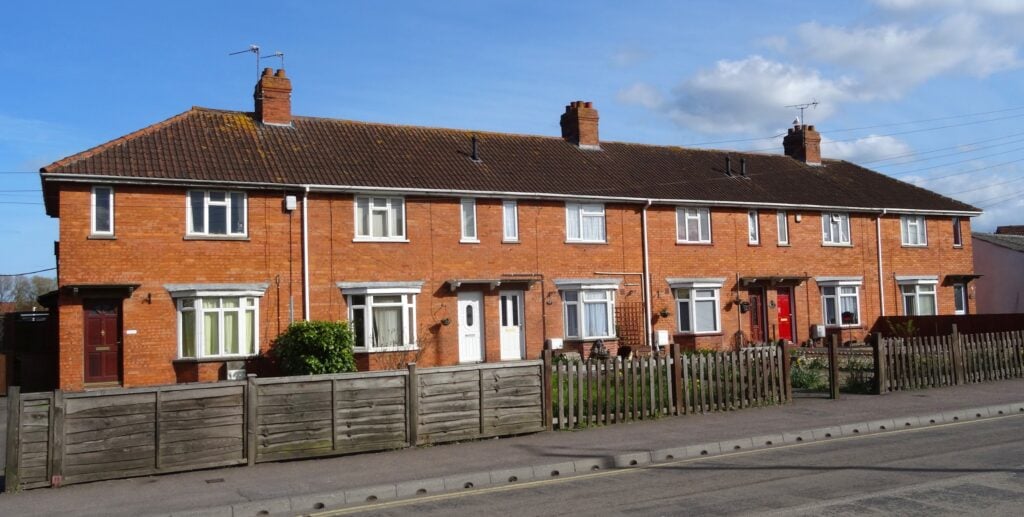Think of public housing, and a familiar picture comes to mind: hulking, run-down brick tenement buildings, graffiti-strewn malfunctioning elevators, crime, drugs, and all the social ills that go with it. Unsurprisingly, previous governments sought to move away from public housing as a solution for low-income residents. However, the affordability crisis has placed housing firmly back in the spotlight, and public or social housing, as it is now being termed, is once again being touted as a solution.
If only it were that simple.
The Urgent Need for Affordable Housing
With homelessness on the rise and both the working and middle classes feeling the effects of elevated home prices—homes are unaffordable in 80% of U.S. counties—high interest rates and escalating rents, there’s little doubt about the need for affordable housing. Even both presidential candidates have offered solutions.
“This is hitting first-time home buyers that can’t get into the housing market. This is hitting middle-class renters who are spending more than 50% of their income on rent,” Brian McCabe, Associate Professor of Sociology at Georgetown, told Time. “It’s not that there’s never been an affordability crisis before, but it’s now an affordability crisis that’s hitting a much broader set of Americans.”
The Different Sides of Public Housing
Not all public housing consists of crime-ridden, poorly maintained tenements. It’s back in the spotlight because of innovative and attractive developments such as The Laureate in Montgomery County, Maryland, which has transformed notions of what the term can mean. In most settings, the Laureate would be termed a luxury apartment building with its raft of amenities and attractive, modern construction.
Montgomery County has been an innovator in public housing initiatives. It instigated a landmark law that requires developers to set aside about 15 percent of the units in new projects for households making less than two-thirds of the area’s median income—now $152,100 for a family of four. For-profit developers built the Laureate, but the controlling owner is a government agency, the Montgomery County Housing Opportunities Commission. H.O.C. has a 70% stake, so the Laureate can set aside 30% of its 268 units for affordable housing.
It’s a far cry from the first self-contained and largest cooperative housing development ever built, Co-op City in the Bronx. Few can dispute the bold intentions and even bolder scale of the 15,000-unit development, completed in 1973 and often referred to as a “city within a city.” Democratic lawmakers Alexandria Ocasio-Cortez and Tina Smith cited Co-op City as an example of how public housing can work. However, that development has a history of poor management, corruption, and squalid conditions, which led to an emergency repair bill of $500 million in 2003. Co-op City, while laudable for its intentions, is hardly the shining star to encourage further investment in public housing.
But neither is The Laureate as attractive as it is. That’s because the Laureate is geared toward the middle class and is located in a wealthy county. Residents who earn around $50,000/year can expect to pay $1,700 for a one-bedroom apartment, compared with a market rent of around $2,200. Other residents might expect to pay half the advertised rate depending on their income. Montgomery County was able to kick in $100 million, using its ownership position to become a benevolent investor that trades profits for lower rents.
“The private sector is focused on return on investment,” Chelsea Andrews, H.O.C.’s executive director, told the New York Times. “Our return is public good.”
Developers Are Rejecting Government Funding
Unfortunately, that’s not a position that many financially stressed counties can adopt. Public housing is usually financed by the Department of Housing and Urban Development and operated by one of the nation’s roughly 3,300 public housing agencies, which are locked in a steady decline.
That’s partly why private developers are rejecting government money for affordable housing. Mismanagement and red tape in the public sector have a history of bloating construction expenses and other costs for developers. It’s why—despite the commitment of tens of billions of dollars from Californian State and local government, some developers such as S.D.S. Capital Group, which recently completed a 49-unit apartment building in South Los Angeles, has self-financed the project. S.D.S. told the Wall Street Journal that it cost them $291,000 per unit to build instead of the roughly $600,000 that the city of Los Angeles has averaged for similar apartments.
A recent report commissioned by the city of San Jose found that affordable housing projects that received tax credits cost an average of around $939,000 a unit to build there last year. The average affordable unit in the Bay Area costs $817,000 to build, according to a study by the Bay Area Housing Finance Authority and the affordable housing finance company, Enterprise.
Rather than using government cash, S.D.S., an investment firm, raised a $190 million fund to build an estimated 2,000 units for formerly homeless people in the city with mental health and other medical needs. The speed of private, self-funded construction has proved to be a big savings compared to the governmental bureaucracy that hampers similar projects.
“We believe there’s a different way than using government money, which really becomes slow and arduous and increases cost,” Deborah La Franchi, chief executive of S.D.S., told the Wall Street Journal.
“You’re cutting out millions of dollars just in soft costs,” David Grunwald, an executive at R.M.G. Housing, which is developing the S.D.S. fund’s projects, said of private financing.
Why Section 8 Has Faltered
Unlike many landlords, S.D.S.’s model is unique in that it accepts government vouchers—Section 8—to house residents. The Los Angeles City Housing Authority says there are over 1000 unused tenant vouchers at any one time, which provides a captive market for S.D.S. buildings.
Activists have found that the rejection of Section 8 vouchers by brokers looking to rent apartments is a nationwide issue. A watchdog group, Housing Rights Initiative, filed a lawsuit in New York in 2022, citing—after a sting operation—the discriminatory practices of landlords and real estate agents when turning away prospective tenants who rely on subsidies to pay rent. It is illegal in New York City for landlords to refuse to accept applications from tenants who depend on them.
“Housing discrimination is not an isolated incident,” Aaron Carr, the executive director of the Housing Rights Initiative, told the New York Times. “It is a part of an industrywide problem.”
When Bill Clinton encouraged the movement away from public housing construction with the Faircloth Amendment in 1998, the hope was that private landlords in mixed-income buildings would take up the slack. Henry Cisneros, Bill Clinton’s H.U.D. Secretary developed a plan that consolidated grant programs and shifted the emphasis to housing vouchers over traditional public housing subsidies.
According to a H.U.D. report, HOPE VI, a H.U.D. program aimed to redevelop “severely distressed” public housing projects, demolished 98,592 public housing units and replaced them with 97,389 mixed-income units between 1993 and 2010. It was widely considered a move out of a Republican playbook and received no blowback. However, gentrification and the demand for housing from non-voucher renters have pushed Section 8 tenants further into the margins of low-income housing in dicey neighborhoods. Many tenants feel that rejecting Section 8 is a mask for racial discrimination. Some landlords and renters conversely feel Section 8 tenants can disrupt their buildings and neighborhoods.
Insurance: The Silent Killer
As if public/affordable housing wasn’t facing enough issues, soaring insurance costs have made things unsustainable for developers, landlords, and management companies. It’s not just in areas of extreme weather but nationwide where costs have quadrupled along with deductibles.
Unlike market-rate apartment developers, multifamily projects financed by subsidies and tax credits cannot pass on those higher insurance costs to tenants since they are limited by government guidelines as to how much rent they can collect. As a result, developers and housing authorities have appealed to state lawmakers for assistance or have decided to abandon affordable housing completely. According to a National Leased Housing Association survey, nearly one-third of affordable housing providers reported increases of at least 25 percent.
“In 2020, I would have said this is cyclical; the pendulum has always been swinging,” Denise Muha, the organization’s executive director since 1988, told the New York Times. “But this is totally different. I don’t see this really curing itself anytime soon.”
Final Thoughts
Affordable housing in America is an oxymoron in this day and age. The red tape, bureaucracy, and social issues that come with providing it have made it a minefield for developers and investors. While public housing developers such as S.D.S. have largely circumvented the problem by taking matters into their own hands and bypassing the government, there is still the issue of management and upkeep. The lessons learned from Co-op City City is that despite a city’s best intentions, when the management of a project cannot run efficiently and ethically and without the finances it needs, things will deteriorate quickly.
Public housing advocates worldwide often point to Vienna, which, with its huge apartment complexes known as Gemeindebauten, has made Austria’s capital one of the world’s most livable cities. Why they have succeeded so spectacularly in Austria but not so in the U.S. is, however, a far longer discussion.
Ready to succeed in real estate investing? Create a free BiggerPockets account to learn about investment strategies; ask questions and get answers from our community of +2 million members; connect with investor-friendly agents; and so much more.
Note By BiggerPockets: These are opinions written by the author and do not necessarily represent the opinions of BiggerPockets.




